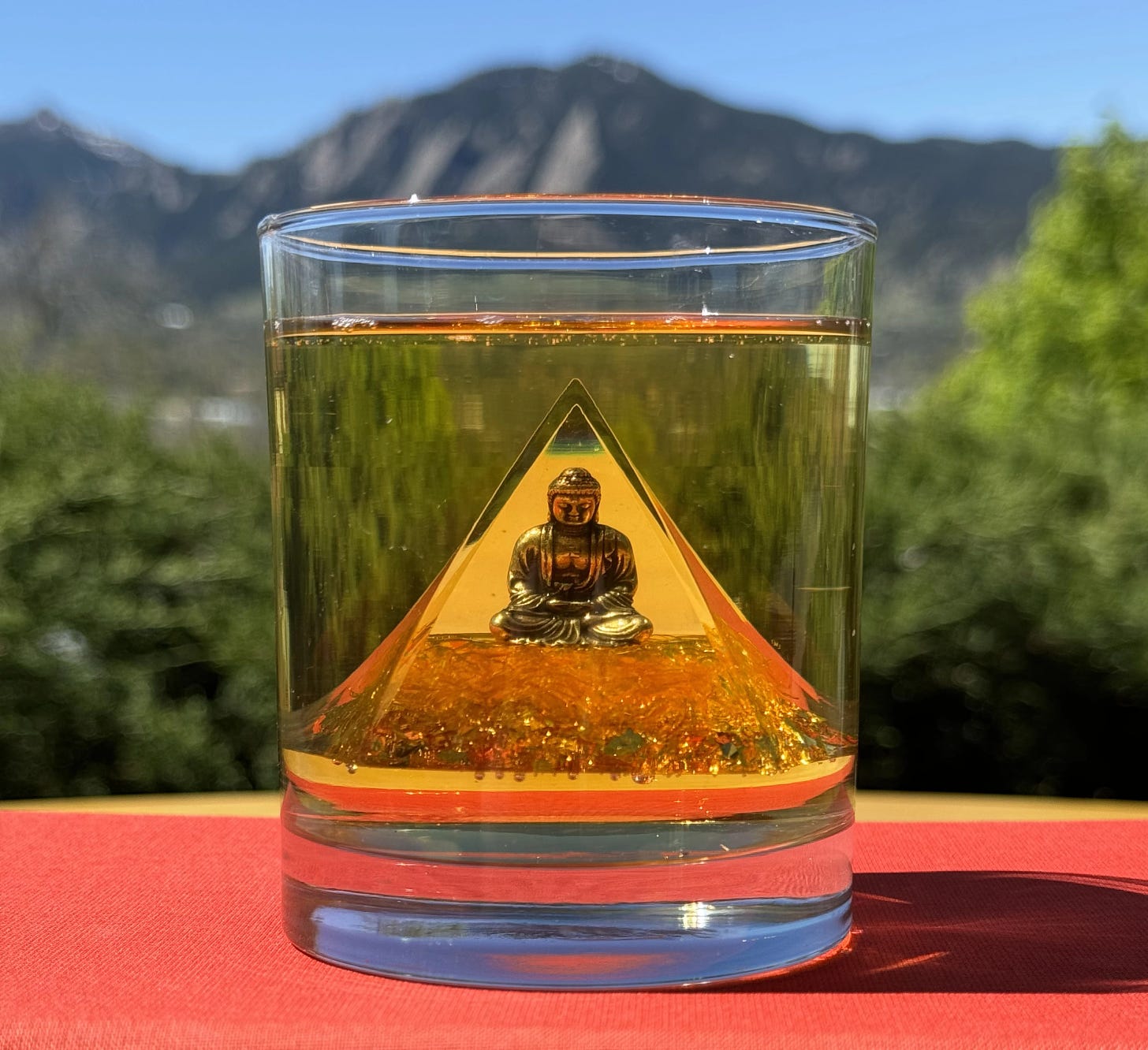This is a factual report on an objective experiment that falsified a controversial spiritual claim. The claim concerned tantric Buddhism’s understanding of the nature of enlightenment, which is significantly different from that of mainstream Buddhism.
It’s unusual to be able to evaluate spiritual claims objectively. Many are about subjective mental states, which aren’t amenable to objectivity. Others are about gods or demons or miracles, which we know don’t even exist, objectively. (Although they may be helpful anyway.) This was a special case in which I was able to devise a simple, direct, unambiguous experiment.
Before we get to that, I have to explain some historical background, to explain why the claim was made in the first place.
The claim had substantial political consequences for mainstream American Buddhism overall at the time. It was a very big deal, because it was taken by many as settling the question “is it permissible for non-Tibetans to teach Buddhist tantra” with a “No!”
Bad behavior by powerful spiritual leaders is universal across religions, places, and times. “Baptist televangelist, famous for condemning sins of the flesh, arrested while smoking crack with an underage male prostitute” is barely newsworthy. However, a spate of such incidents involving American Hindu and Buddhist leaders, many of them white, led to a perceived guru crisis in the 1980s.
Here tantric Buddhism has a problem Baptism doesn’t: it rejects all fixed moral rules. The televangelist can’t say “for pastors to partake freely is godly Christian practice according to the esoteric Inner Baptist Scriptures.” The tantric scriptures do say that any action whatsoever may be benevolent in context, and should be assumed to be benevolent if performed by a tantrically enlightened person, who cannot be judged by conventional ethical standards. (Whereas an enlightened person in mainstream Buddhism observes perfect moral propriety, by definition.) Some famous Buddhist leaders justified extensive, outrageous abuse that way.
Something had to be done. A powerful political coalition consolidated at a conference in 1993. Twenty-two prominent Western Buddhist teachers met with the Dalai Lama, presented the problem, and asked for explanations and guidance. The upshot was an influential statement, signed by all the Westerners, effectively condemning and prohibiting the teaching of tantra. The Dalai Lama also put political pressure on Tibetans to stop teaching tantra to Westerners.
So anyway, at the conference, the Westerners said: these guys are justifying bad behavior by saying it’s OK for them because they are tantrikas. (A “tantrika” is a person who practices tantra.) This doesn’t seem right, but we don’t know about tantra, and you’re supposed to, so can you help us out here?
And the Dalai Lama said: well, yes, theoretically the scriptures do say something like that, but tantra is extremely advanced and difficult and these bad guys aren’t genuine tantrikas. In fact, almost no Tibetans are, even. I don’t know any myself, although there are rumors of a very few extraordinary cave yogis who may be. And, obviously, you can’t teach tantra unless you are a genuine tantrika. And, we know that there are hardly any, because the scriptures have a test. And the test is, can the supposed tantrika enjoy drinking human urine?1
This electrified the Western Buddhist teachers. No one would be willing to take this piss test! So the highest authority in Tibetan Buddhism had declared that teaching tantra is virtually never legitimate. Now the Western Buddhists had a clear religious warrant for denouncing anyone who claimed that abusing their followers was “teaching them tantra.”
All this was before my time. I wasn’t a Buddhist in 1993. I learned about this stuff only around 2004. I was then a student of white people who taught Buddhist tantra, or claimed to. They were denounced by other white Buddhists who said they had to be fakers, and the stuff they taught must be fake. So the matter was relevant: can white people teach tantra? I thought the answer was clearly yes, but the Dalai Lama apparently said no. And what has urine got to do with anything?
All this was seriously puzzling, and it took me several years of interviewing many people, plus historical research, plus an experiment, to figure out what was going on.
At this point, I’m going to paywall the rest of this story. It wouldn’t be a big problem if it leaked, but I would prefer not have it broadly available; and I would ask that you exercise discretion if you discuss it elsewhere.
Some of it is rather personal. It would also have caused a lot of religious acrimony in 2004, for reasons people care much less about now. There are still ways of misunderstanding that might provoke strong reactions. As one example, the photograph at the head of this post might be mistaken as sacrilegious or derogatory. It is the opposite, as I will explain. Strong misplaced emotions generate “engagement,” a/k/a “controversy,” a/k/a social media shouting matches. Those draw people I don’t want as readers, and drives away some I do.
I’m telling this story for two reasons. One is that the explanation goes straight to the heart of the meaning of Buddhist tantra. That is extraordinarily beautiful, but also strong medicine, of which not everyone might wish to partake.
The other reason for telling the tale is that I find it funny and odd, and I hope you will enjoy it too. However, if you are easily upset or offended, you might want to stop reading now.




